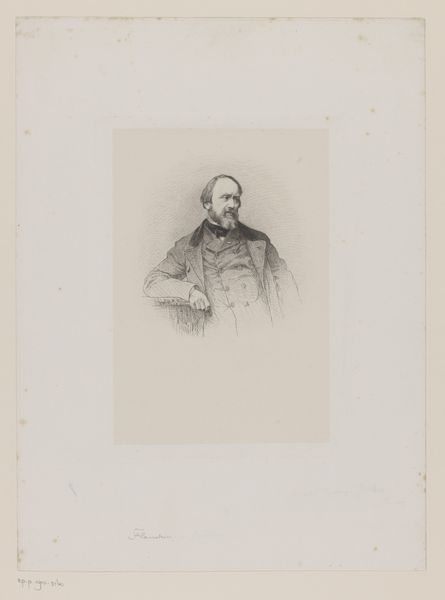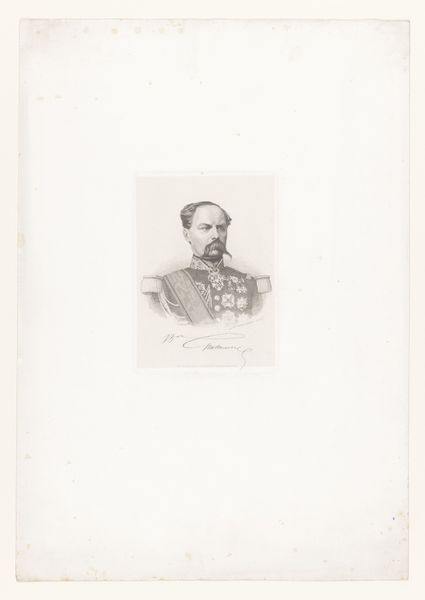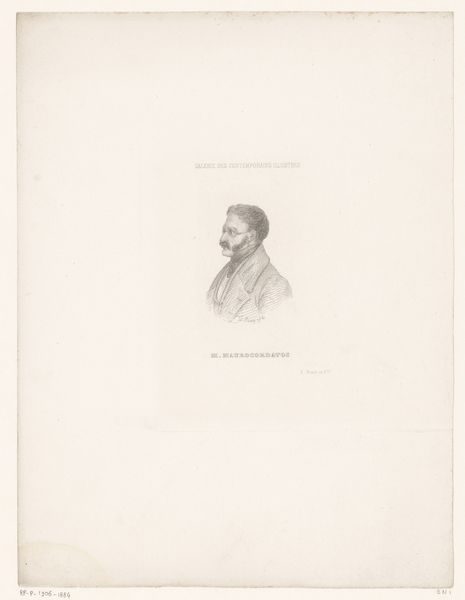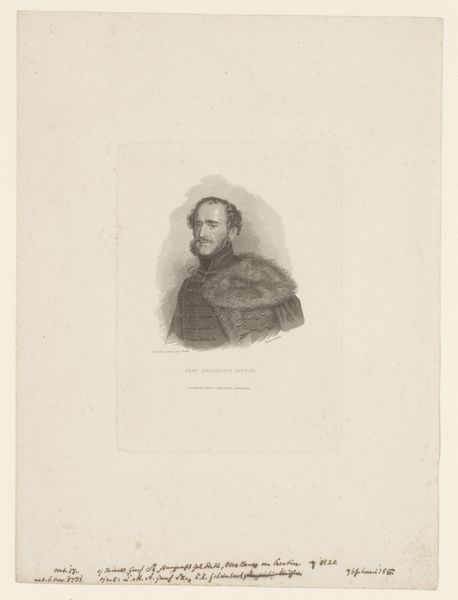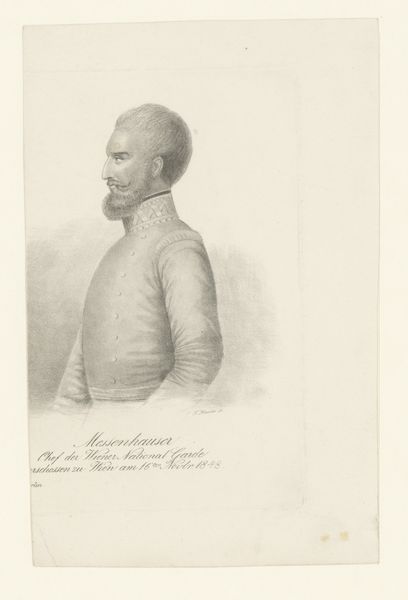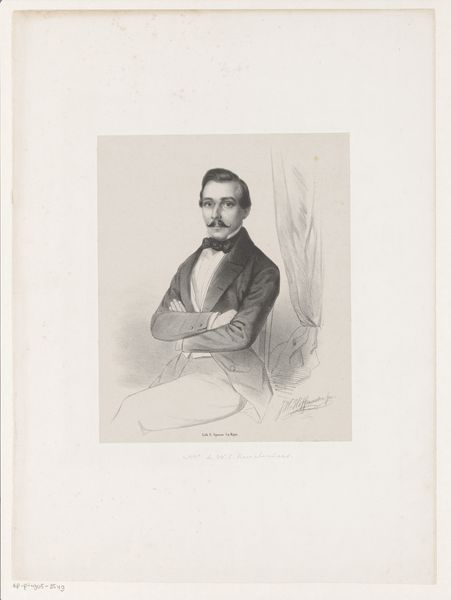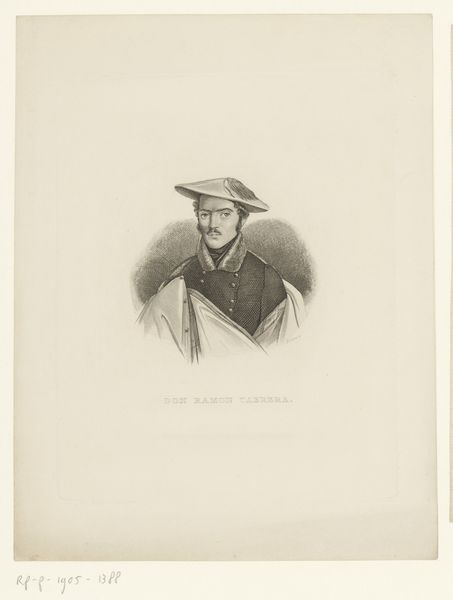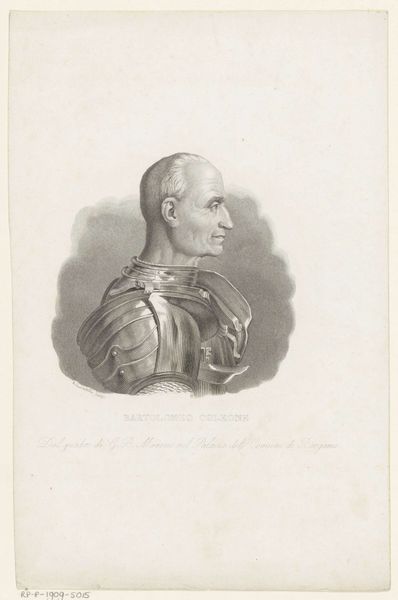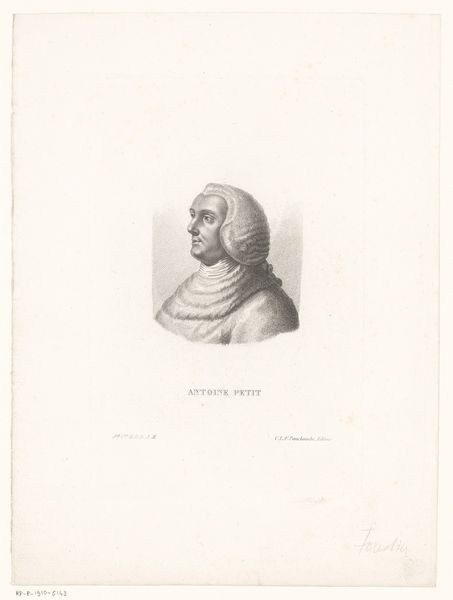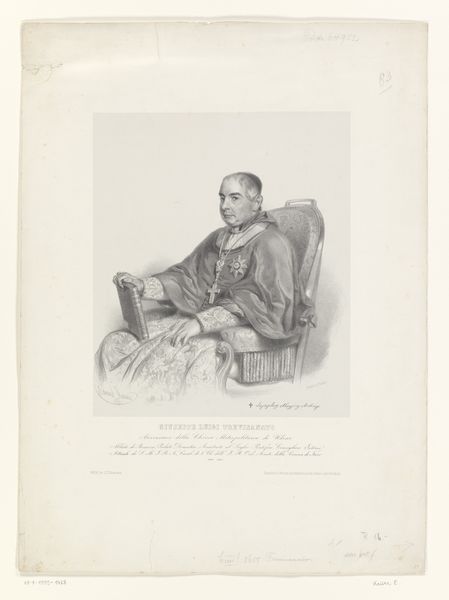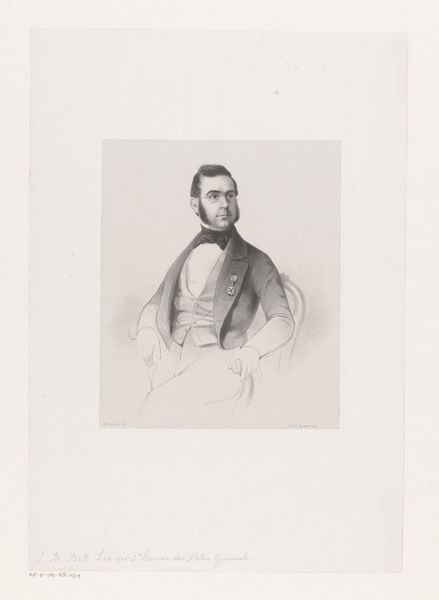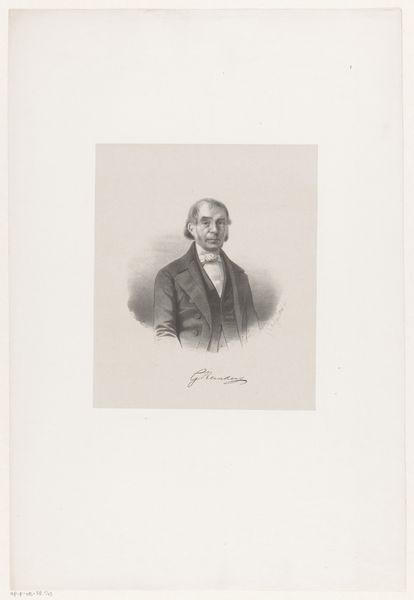
print, engraving
#
portrait
#
pencil drawn
#
light pencil work
# print
#
pencil sketch
#
pencil drawing
#
history-painting
#
academic-art
#
engraving
#
realism
Dimensions: height 263 mm, width 170 mm
Copyright: Rijks Museum: Open Domain
Curator: This piece is identified as "Portret van Josef, Graf Jellačić de Buzim," an engraving believed to be from the 19th century by F. Randel. Editor: Wow, he looks like someone you wouldn't mess with. There's something both severe and incredibly ornate about that uniform. I'm immediately thinking of empires and societal hierarchies... heavy sigh. Curator: Well, Josef Jellačić was a significant figure. He served as a general in the Austrian army and is remembered particularly for his role in suppressing the Hungarian Revolution of 1848. Thinking about intersectional identities, it’s interesting how history remembers him differently in Croatia versus Hungary, representing deeply contested nationalist narratives. Editor: It's funny you say that because something about the stiffness of the pose reads as inherently political. But I also wonder about the hand holding a baton—it appears deliberately casual, like he’s trying to appear approachable. Or maybe it is pure intimidation? It's throwing me off. Curator: It speaks to the complexities of portraying power. Here, we see classic academic art conventions employed to craft an image serving very specific ideological purposes, where every detail reinforces existing societal structures. Note how his gaze, posture, even the texture of the engraving, all reinforce a specific sense of authority. Editor: I think it's the almost photographically realistic details that give it so much weight. You almost feel like you could reach out and touch the fabric of that coat. Which is probably precisely what the artist intended! I keep wondering, though, how the work challenges or even reinforces how people think about heroism or patriotism now. Curator: Precisely. By examining how historical figures were presented—and why—we invite deeper investigations into how power and identity continue to intersect today. Thinking about gendered representations, too, one wonders if a female figure would ever be represented with this level of implied authority and military prowess. Editor: Right? So much of historical art involves unpacking layers of meaning embedded in societal expectations. Reflecting on all that... I think this piece might make you want to march into history or, at the very least, ask some tough questions about it. Curator: A worthy provocation for considering the narratives we inherit, absolutely.
Comments
No comments
Be the first to comment and join the conversation on the ultimate creative platform.

